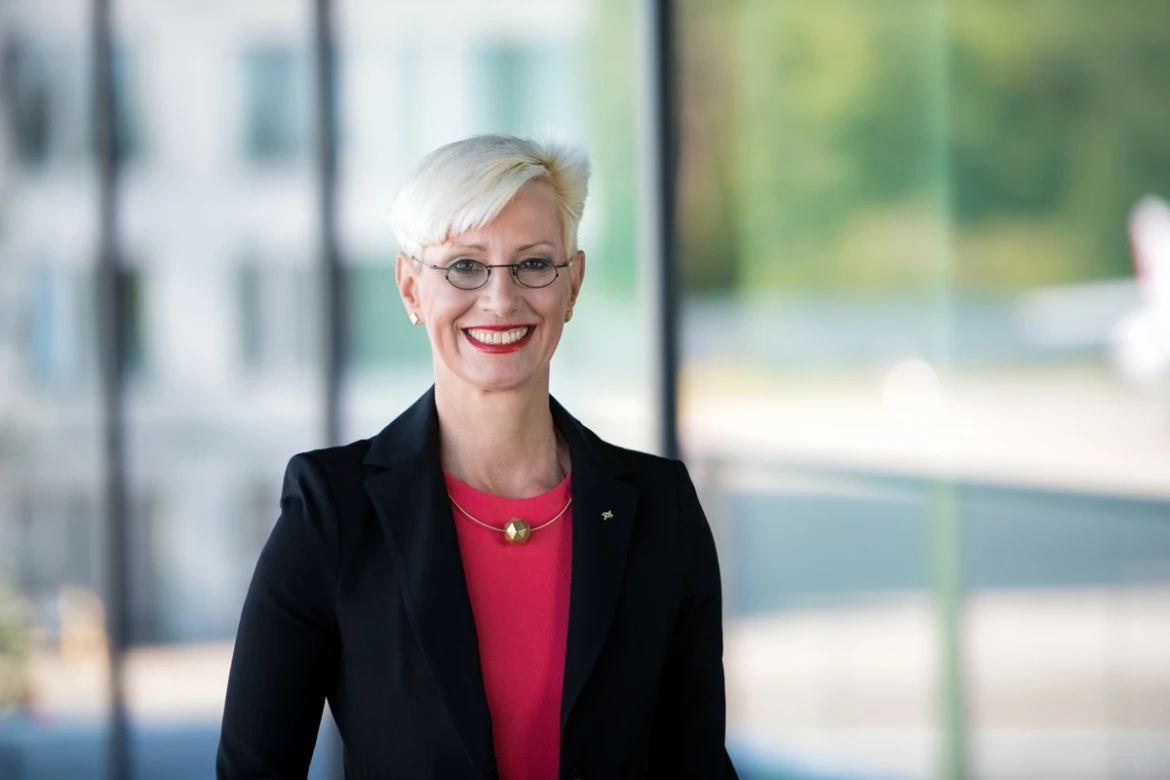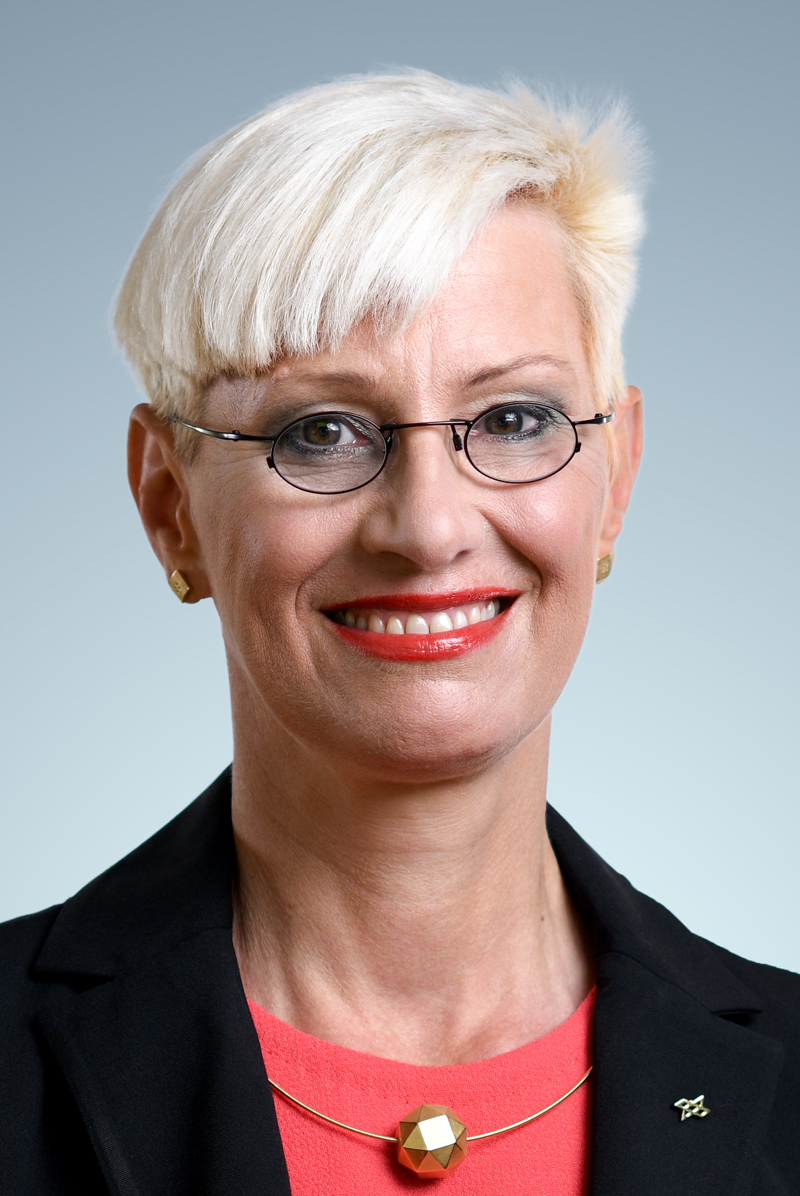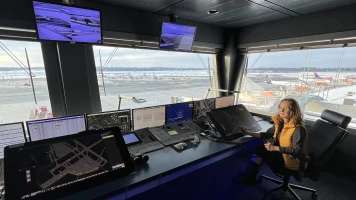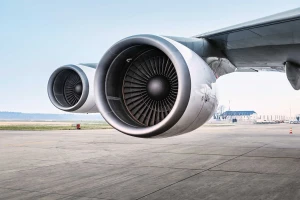people
Head of DLR, Prof. Anke Kaysser-Pyzalla, talks about the aviation of tomorrow
The new head of DLR, Prof. Anke Kaysser-Pyzalla, talks about opportunities and challenges for the aviation of tomorrow and how to achieve the monumental goal of emissions-free flight.
4 mins reading time published on: 06.04.2021

Prof. Kaysser-Pyzalla, you have been Chair of the Executive Board of the German Aerospace Center (DLR) since October 1, 2020. What are your plans as head of this renowned research institution?
Prof. Kaysser-Pyzalla: DLR is working on solutions to the major challenges in our key research areas, which are aeronautics, space, energy, transport and the cross-cutting issue of security. To this end, we conduct basic and applied research and innovate with our partners from science and industry.

Anke Kaysser-Pyzalla studied mechanical engineering and materials science in Bochum and Darmstadt. She completed her doctorate and qualified as a university lecturer at Ruhr University in Bochum. Following research activities at the Hahn-Meitner-Institute (HMI) and the Technical University of Berlin, she conducted research and taught as a university professor at the Vienna University of Technology from 2003 to 2005. In 2005, she joined the management team at the Max-Planck-Institut für Eisenforschung GmbH in Dusseldorf as Scientific Member, Director and then Managing Director. In 2008, she was appointed Scientific Director of the Helmholtz Centre for Materials and Energy in Berlin (Helmholtz-Zentrum Berlin für Materialien und Energie GmbH), which was created under her leadership through the merger of HMI and the Berlin Electron Storage Ring Society for Synchrotron Radiation (BESSY). In 2017, Anke Kaysser-Pyzalla was elected President of TU Braunschweig, a post she held until the DLR Senate unanimously appointed her as the new Chair of the Executive Board in March 2020.
In the future, we want to harness the synergies among our main research areas even more rigorously by tapping the expertise of our institutes and facilities. For example, with their designs and research for large-scale production of synthetic fuels, our colleagues in energy research are making important contributions to the future of aviation and transport. Research on hydrogen technologies, from production to transport to use, or research on the application of AI methods is also relevant for all our focus areas.
By collaborating with partners from industry, we ensure that our research leads to innovations. One goal here is to make these efforts even more visible, for example through lighthouse and demonstration projects. We have also set out to systematically promote start-up businesses, a plan that is reflected in our new Executive Board structure. My colleague Prof. Karsten Lemmer will be overseeing our new department, “Innovation, Technology Transfer and Research Infrastructure.”
Climate protection is a major issue at the moment, and emissions-free flight is the overall goal for aviation. How do you see things developing here?
Kaysser-Pyzalla: DLR’s aeronautics research is aligned with the EU Green Deal. Our goal is to provide solutions for emissions-free aviation from the year 2050 onward, and the aviation industry is an important partner for us to achieve that. In addition to the technological challenges for emissions-free flight, we are particularly concerned with issues relating to the certification and approval of new technologies, changes in production, and the role of the supply industry.
Throughout this entire process, digitalization offers us new opportunities for designing and optimizing the complex overall air traffic system. Our role in this is to support the aviation industry as it develops the next generation of aircraft.
There are several approaches to emissions-free flight, including an improved gas turbine, fuel cells, the use of SAFs, and hydrogen. Which do you believe holds the greatest potential?
Kaysser-Pyzalla: The path to climate-neutral aviation calls for both parallel and disruptive approaches with new technologies. In the short term, the further development of proven engine concepts still holds great potential for fuel savings. In addition, more environmentally friendly fuels can be added into the mix, and new fuels, such as hydrogen, can be introduced later on. On short-haul routes, we see hybrid-electric feeder and regional aircraft that use stored energy solutions, such as batteries or fuel cells, as a medium-term development. This will make it possible to offer feeder services to the next largest airport or enable travel within metropolitan areas. On medium- and long-haul routes, we’re looking at new gas turbine concepts and thermodynamic cyclic processes in the medium term, in conjunction with sustainable fuels. Over the long term, hydrogen direct combustion based on green hydrogen is also a promising technology. To enable low-emission flight, we need not only changes to the propulsion system, but also, for example, new concepts for integrating those systems into future aircraft and ways to optimize flight guidance.
“Demonstrators of whole aircraft will play an important role, because research results must be tested in practice”
Chair of the Executive Board of the German Aerospace Center (DLR)

Deutsches Zentrum für Luft- und Raumfahrt
German Aerospace Center
DLR is the Federal Republic of Germany's research centre for aeronautics and space. DLR conducts research and development activities in the fields of aeronautics, space, energy, transport, security and digitalisation. The German Space Agency at DLR plans and implements the national space programme on behalf of the federal government. Two DLR project management agencies oversee funding programmes and support knowledge transfer.
-
The German Aerospace Center (DLR) is the national aeronautics and space research center of the Federal Republic of Germany. Approximately 10,000 employees work at its headquarters in Cologne and 15 other locations in Germany. DLR has its own flight facilities in Braunschweig and Oberpfaffenhofen near Munich.
-
Four offices in Brussels, Paris, Tokyo and Washington D.C. are responsible for organizing cooperative ventures with international partners.
-
DLR’s 54 institutes work on numerous projects concerning the future of aviation and spaceflight, and develop environmentally friendly technologies for applications in energy supply, mobility, communications and security.
-
DLR operates the largest civilian fleet of research airplanes and helicopters in Europe—ranging from the A320ATRA to the Cessna 208B and including one aircraft powered exclusively by fuel cells.
- DLR has been given responsibility by the federal government for the coordination and implementation of the German space program, and also takes part in joint international missions.
Where do you think action is necessary if the aviation industry is to reach its ambitious targets?
Kaysser-Pyzalla: The technological maturity of future applications is still quite low, and calls for a great deal of research and development. This requires continuous promotion and support. If these applications are to succeed, we need appropriate regulatory frameworks, as well as close cooperation and knowledge sharing with industry. Demonstrators of whole aircraft will play an important role, because research results must be tested in practice. A current example is the Do228, jointly developed by DLR and MTU, as well as the evolutionary refinement of the geared turbofan.
As a materials expert, what role would you say new materials play in aviation?
Kaysser-Pyzalla: New materials enable new functionalities, such as in batteries and fuel cells, but also for germ-resistant surfaces in the cabin, for example. Lightweight construction offers possibilities: replacing metallic alloys with oxide ceramics in turbine cases, for example, is an interesting prospect. Optimized process control and specific developments in materials are also required to tap the massive potential of new manufacturing processes for complex components, such as 3D printing. The long-term goal is to also be able to print brittle materials, such as titanium aluminides, as well as to produce components with tough requirements regarding service life and creep resistance.
Peter Altmaier, the German Federal Minister for Economic Affairs and Energy, called you an “experienced research manager.” To what extent do your previous professional roles help you in your work for DLR?
Kaysser-Pyzalla: My engineering background helps me understand the challenges and approaches toward solutions in DLR’s key research areas. It also helps me evaluate methods together with colleagues so we can jointly drive forward the most promising and exciting solutions and projects. My own experience with research processes made me realize the value of creativity, but also strategy and perseverance. From my experience with managing projects and large organizations, I have learned the importance of structures, processes, participation and team spirit. I bring all of this to my leadership of one of the largest engineering and scientific research organizations in Europe.







